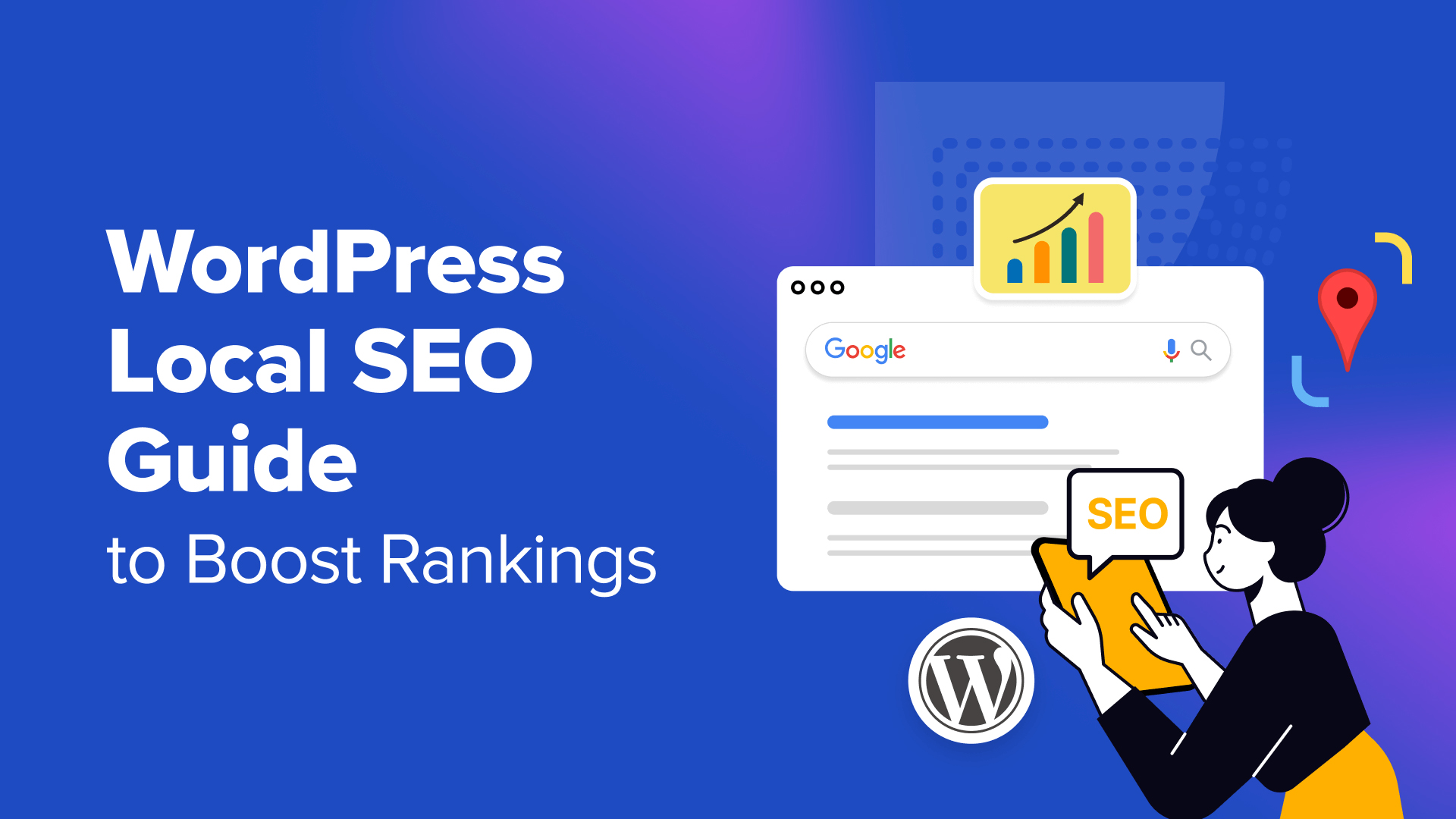Search engine optimization (SEO) is one of the most effective ways to increase your website traffic, generate leads, and grow your brand online. And when it comes to SEO, WordPress is one of the best platforms to get started.
WordPress powers over 43% of all websites and is inherently SEO-friendly — but to truly rank on the first page of Google, you’ll need to go beyond just installing WordPress and writing blog posts.
In this ultimate SEO guide, we’ll walk you through everything you need to do to optimize your WordPress website for search engines in 2025. Whether you’re a beginner or looking to refine your existing strategy, this guide will cover:
-
On-page SEO fundamentals
-
Technical SEO best practices
-
Must-have SEO plugins
-
Speed and mobile optimization
-
Structured data and schema
-
Content strategy tips
-
Link building techniques
-
And more…
Let’s dive in and start improving your Google rankings the right way.
1. Choose an SEO-Friendly WordPress Theme
Your theme is the foundation of your site’s SEO performance.
✅ What to look for:
-
Fast loading speed
-
Mobile responsiveness
-
Clean HTML5 structure
-
Schema markup support
🎯 Recommended Themes:
-
Astra
-
Kadence
-
GeneratePress
-
Blocksy
-
Neve
Tip: Avoid bloated themes with excessive scripts or outdated code. Always test with Google’s PageSpeed Insights.
2. Install an SEO Plugin
SEO plugins help manage and improve your on-site SEO easily.
🔌 Top SEO Plugins:
-
Rank Math (free & pro)
-
Yoast SEO
-
All in One SEO Pack
-
SEOPress
These plugins offer features like:
-
XML sitemap creation
-
Meta title & description control
-
Canonical URLs
-
Schema markup
-
Social media previews
Setup Tip: Choose one plugin only. Rank Math is highly recommended in 2025 for its all-in-one functionality.
3. Optimize Your Permalink Structure
Go to Settings > Permalinks and choose:
This structure is clean, keyword-rich, and easy for Google to index.
Avoid:
-
Ugly URLs like
?p=123 -
Date-based URLs unless your site is news-oriented
4. Master On-Page SEO
Each page and post should be optimized for a specific keyword.
🎯 Focus Areas:
-
Title Tag: Include your main keyword. Keep under 60 characters.
-
Meta Description: Persuasive summary, include your keyword. Max 160 characters.
-
Headings: Use H1 for the title, H2 for sections, and include variations of your keyword.
-
Keyword Placement: Use keywords in the first 100 words, headings, and throughout the content.
-
Alt Tags: Use descriptive text for images.
-
Internal Linking: Link to other relevant pages/posts.
-
External Links: Link to authoritative sources.
-
URL Slug: Keep it short, clear, and keyword-based.
Tool Suggestion: Use Rank Math or Yoast to audit on-page SEO for every post.
5. Speed Up Your Website
Page speed is a confirmed Google ranking factor.
🔧 Tools:
-
Google PageSpeed Insights
-
GTmetrix
-
Pingdom Tools
🚀 How to Improve Speed:
-
Use a lightweight theme (Astra, Kadence)
-
Install a caching plugin (LiteSpeed Cache or WP Rocket)
-
Optimize images with ShortPixel or Smush
-
Enable GZIP compression
-
Minify CSS, JS, and HTML
-
Use a CDN (Cloudflare or BunnyCDN)
6. Make Your Site Mobile-Friendly
More than 60% of Google searches happen on mobile devices.
✅ Mobile SEO Checklist:
-
Use a responsive theme
-
Test with Google’s Mobile-Friendly Tool
-
Avoid intrusive popups
-
Use legible fonts and spacing
-
Optimize tap targets (buttons, links)
Tip: Use responsive previews inside WordPress Customizer to test mobile layout.
7. Create High-Quality, Keyword-Optimized Content
Content is still king — but it must serve both users and search engines.
🧠 Content Strategy Tips:
-
Use tools like Google Keyword Planner, Ubersuggest, or Ahrefs to find keywords.
-
Follow a content calendar and post consistently.
-
Focus on long-form, value-driven content (1000+ words)
-
Use question-based H2/H3 (great for featured snippets)
-
Add rich media (images, infographics, videos)
Structure Example:
-
Catchy Title
-
Introduction with target keyword
-
Subheadings with LSI keywords
-
List items, bullet points
-
Call to Action at the end
8. Use Schema Markup and Rich Snippets
Schema helps Google understand your content better and can improve CTR with rich results.
📦 Types of Schema to Add:
-
Article
-
Product
-
FAQ
-
Recipe
-
Review
-
Event
-
Local Business
🧩 How to Implement:
-
Use Rank Math (built-in schema options)
-
Use Schema Pro (for advanced users)
-
Use Google’s Structured Data Markup Helper
Tip: Test with Google’s Rich Results Test Tool.
9. Build a Strong Internal Linking Structure
Internal links:
-
Help users navigate
-
Pass link equity
-
Reduce bounce rate
-
Boost time on site
📌 Best Practices:
-
Use descriptive anchor text
-
Link related blog posts within content
-
Update older posts with links to new ones
-
Keep a logical hierarchy
Tool: LinkWhisper (automates smart internal links)
10. Secure High-Quality Backlinks
Backlinks remain one of the most important SEO ranking signals.
⚙️ Effective Link Building Strategies:
-
Guest posting on relevant blogs
-
HARO (Help A Reporter Out)
-
Resource page outreach
-
Broken link building
-
Creating shareable infographics
🚫 Avoid:
-
Buying backlinks
-
Link farms or spammy directories
-
Exact-match anchor stuffing
Tip: Use Ahrefs or Ubersuggest to monitor backlink profile.
11. Submit XML Sitemap to Google Search Console
Your sitemap helps search engines crawl your site efficiently.
Steps:
-
Create your sitemap (done by Rank Math or Yoast)
-
Go to Google Search Console
-
Select your property
-
Submit your sitemap URL:
Check crawl errors, indexing issues, and performance reports here regularly.
12. Optimize Images for SEO
Images should be optimized for speed and search visibility.
📷 Image SEO Best Practices:
-
Use descriptive filenames (e.g., “seo-guide-wordpress.jpg”)
-
Add alt text for each image
-
Use WebP format for better compression
-
Compress images with ShortPixel or Imagify
-
Use lazy loading
13. Use HTTPS and Secure Your Site
HTTPS is a ranking signal.
🔐 How to Set Up:
-
Get an SSL certificate from your host (most offer it free)
-
Use Really Simple SSL plugin if needed
-
Redirect all HTTP pages to HTTPS
Also: Use security plugins like Wordfence or iThemes Security.
14. Enable Breadcrumbs
Breadcrumbs enhance UX and improve crawling.
🎯 Benefits:
-
Show page structure to users
-
Improve CTR in search results
-
Help Google understand site architecture
How to Add:
-
Rank Math and Yoast both support breadcrumbs
-
Customize breadcrumb appearance in Customizer or theme settings
15. Monitor Your SEO Performance
Track, analyze, and refine your SEO strategy.
📈 Tools to Use:
-
Google Search Console (organic performance, queries, pages)
-
Google Analytics 4 (traffic, bounce rate, user behavior)
-
Ubersuggest (keyword performance, backlink monitoring)
-
Ahrefs (advanced SEO tracking)
Review your reports weekly. Adjust content and strategies based on data.
Conclusion
Mastering SEO for WordPress doesn’t require advanced coding or expensive tools — just the right strategy and consistent effort.
From installing an SEO plugin and optimizing content to improving site speed and acquiring backlinks, each step plays a role in boosting your Google rankings.
Remember:
-
Choose a fast, mobile-friendly theme.
-
Use Rank Math or Yoast for SEO essentials.
-
Focus on valuable, keyword-targeted content.
-
Speed up your site and ensure it’s secure.
-
Build authority through internal linking and backlinks.
Search engine algorithms may evolve, but valuable content, excellent user experience, and technical best practices will always remain at the core of SEO.
So take what you’ve learned, apply it to your WordPress site, and start climbing those Google rankings in 2025.




